Imagine standing at the world’s edge, surrounded by misty grasslands, cascading waterfalls, and rare wildlife—welcome to Horton Plains National Park, where every step reveals nature’s wild beauty and secrets of the past.
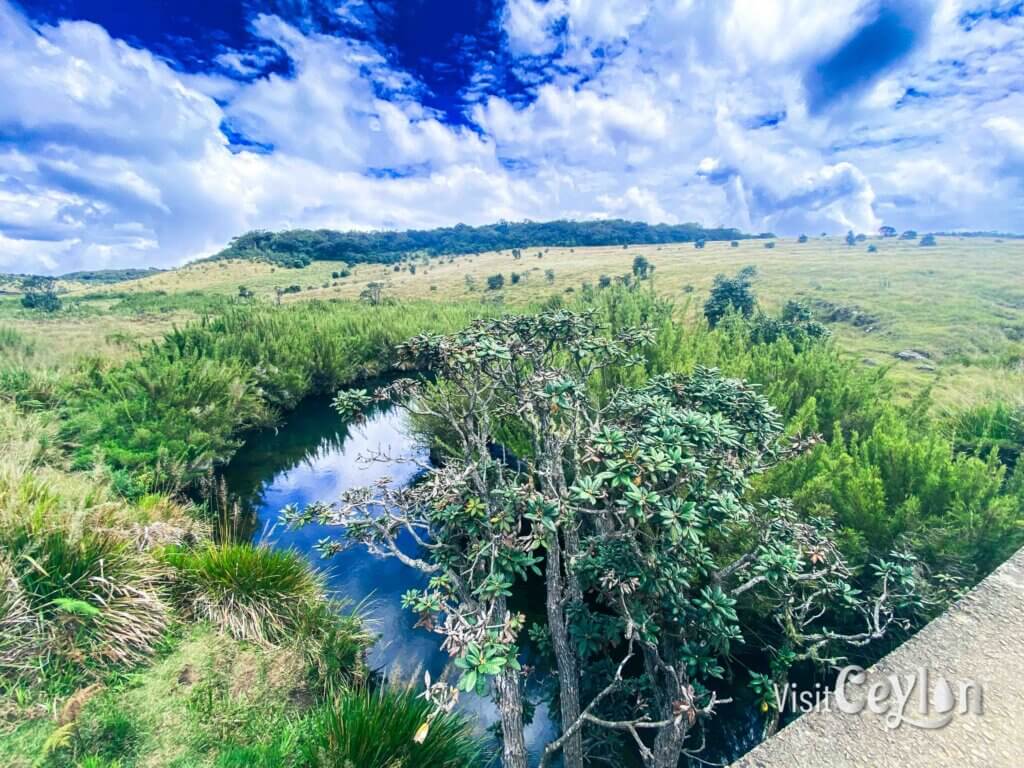
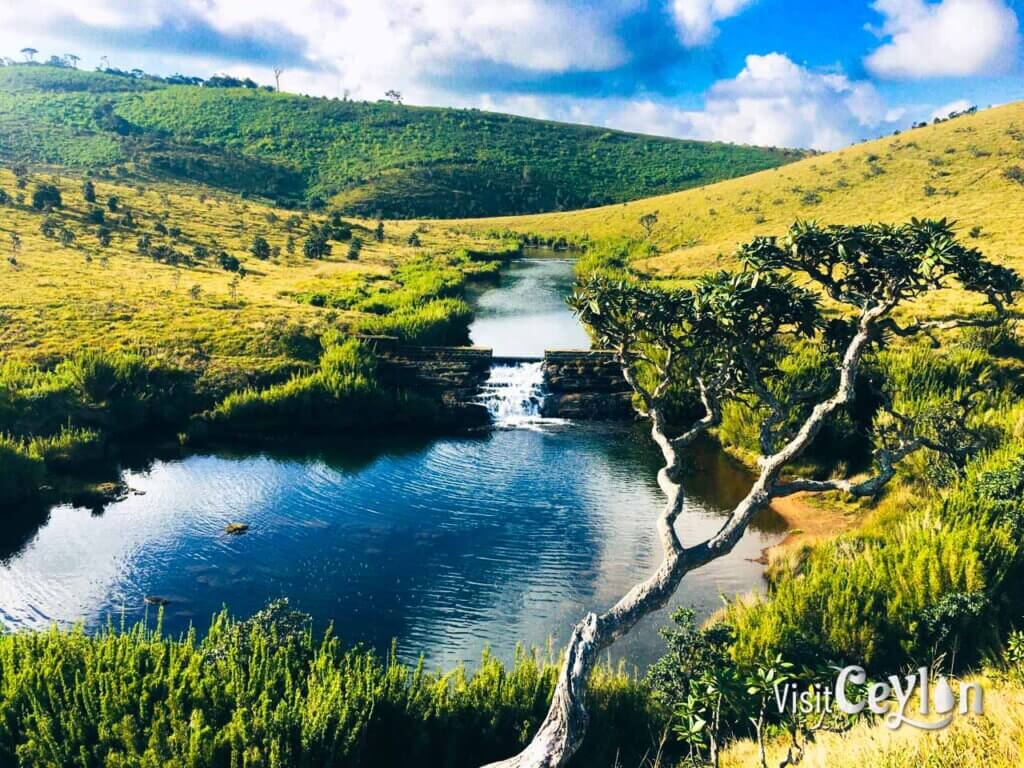
In the central highlands of Sri Lanka, Horton Plains National Park offers a stunning combination of a cool climate, distinct biodiversity, and magnificent scenery. Whether you are passionate about nature or seeking adventure, this UNESCO World Heritage Site guarantees a memorable experience.
What to See?
World’s End
This dramatic cliff is the park’s crown jewel, dropping an impressive 870 meters and offering breathtaking panoramic views that will leave you in awe. On bright, sunny mornings, you might even catch a glimpse of the sparkling Indian Ocean stretching out on the horizon.
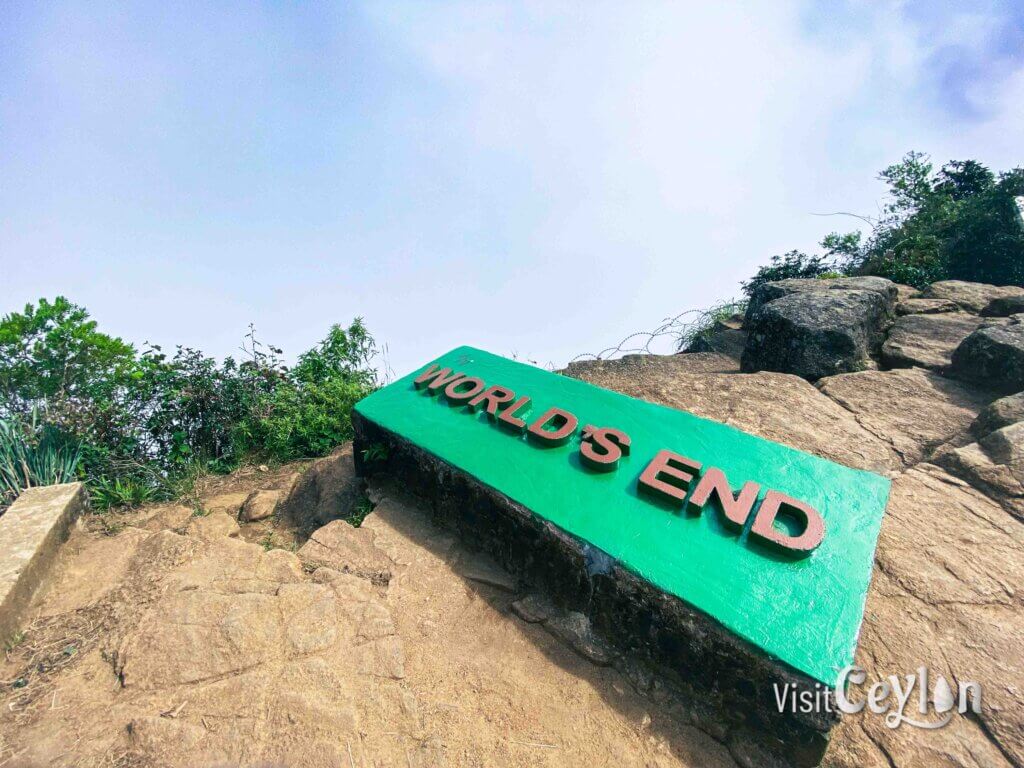
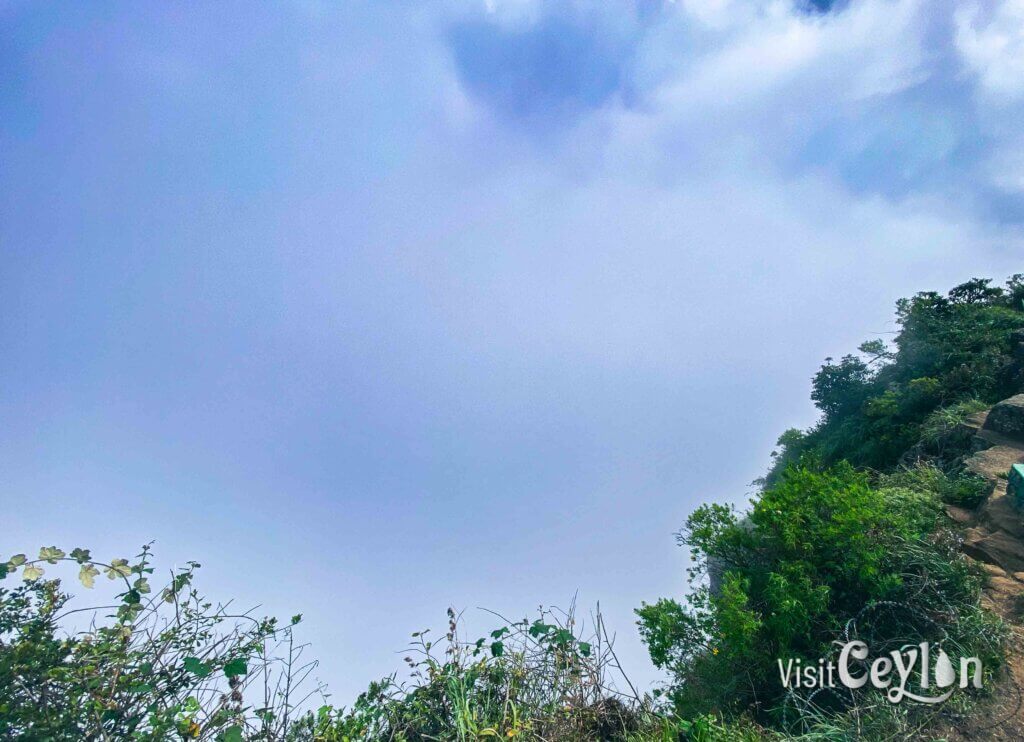
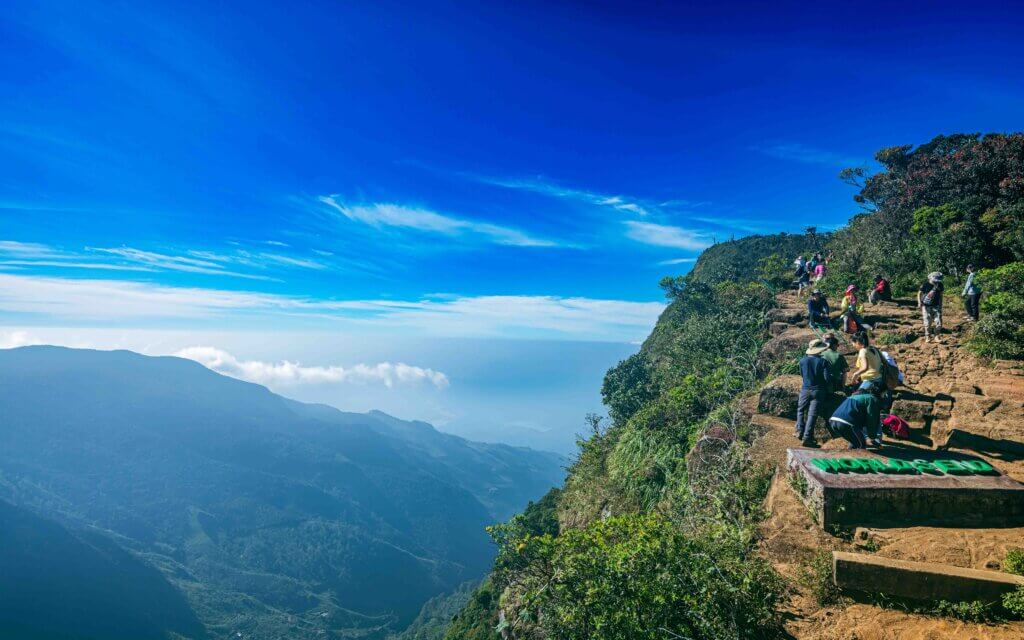
Baker’s Falls
Named after British explorer Sir Samuel Baker, this picturesque waterfall cascades through vibrant greenery. It’s an ideal place to snap some memorable photos and take a delightful break during your hike.
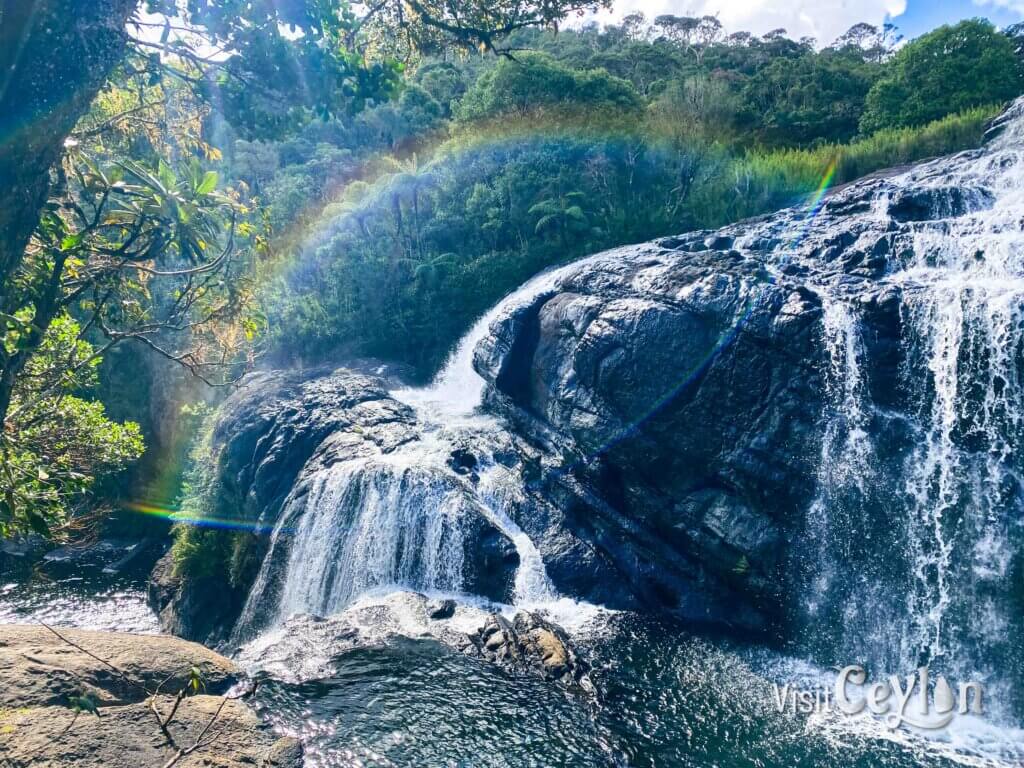
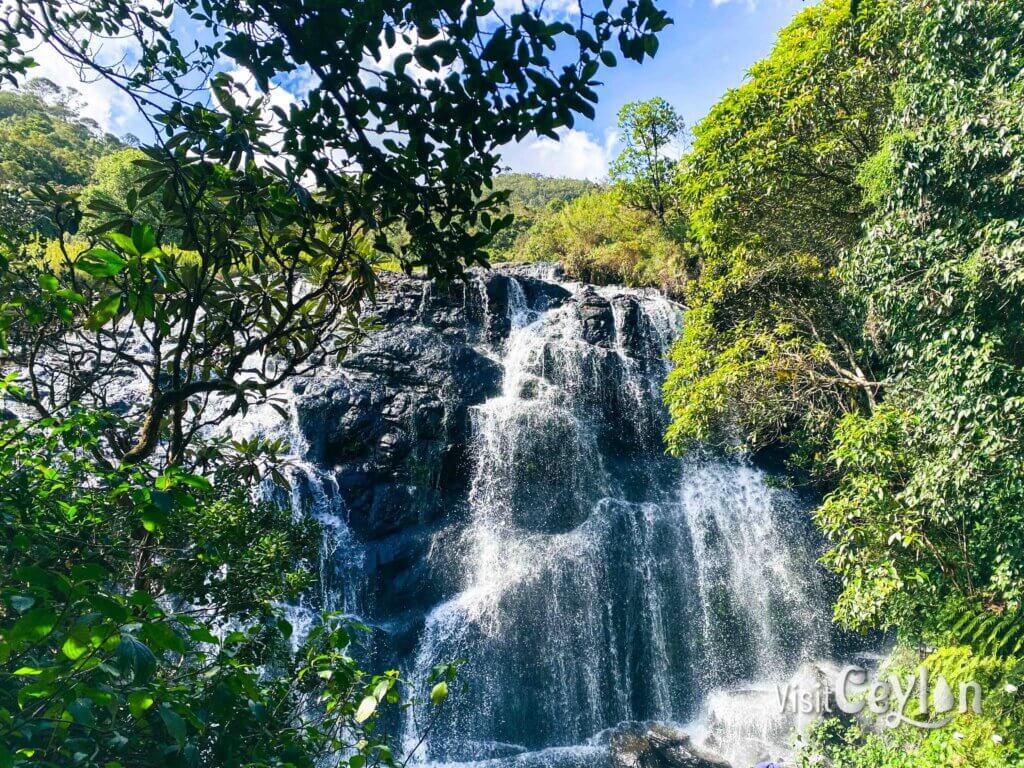
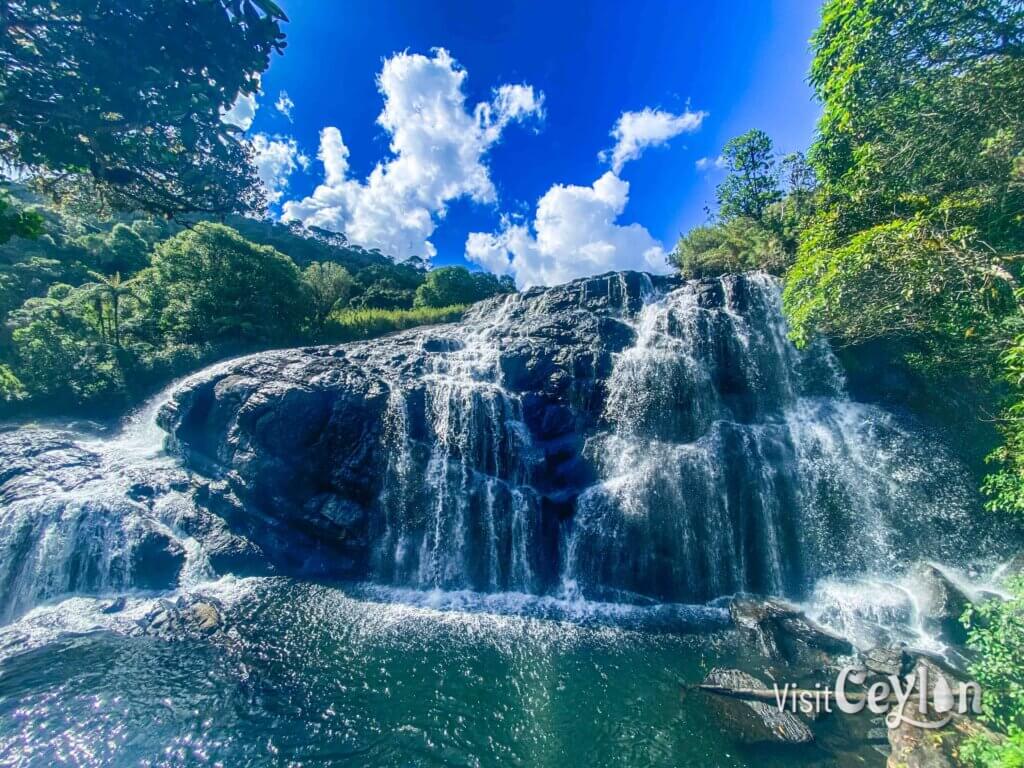
Mini World’s End
Located along the same trail, Mini World’s End is a smaller but equally breathtaking cliff. With a drop of about 270 meters, it provides another incredible vantage point to admire the surrounding landscape, often wrapped in a cosy mystical mist.
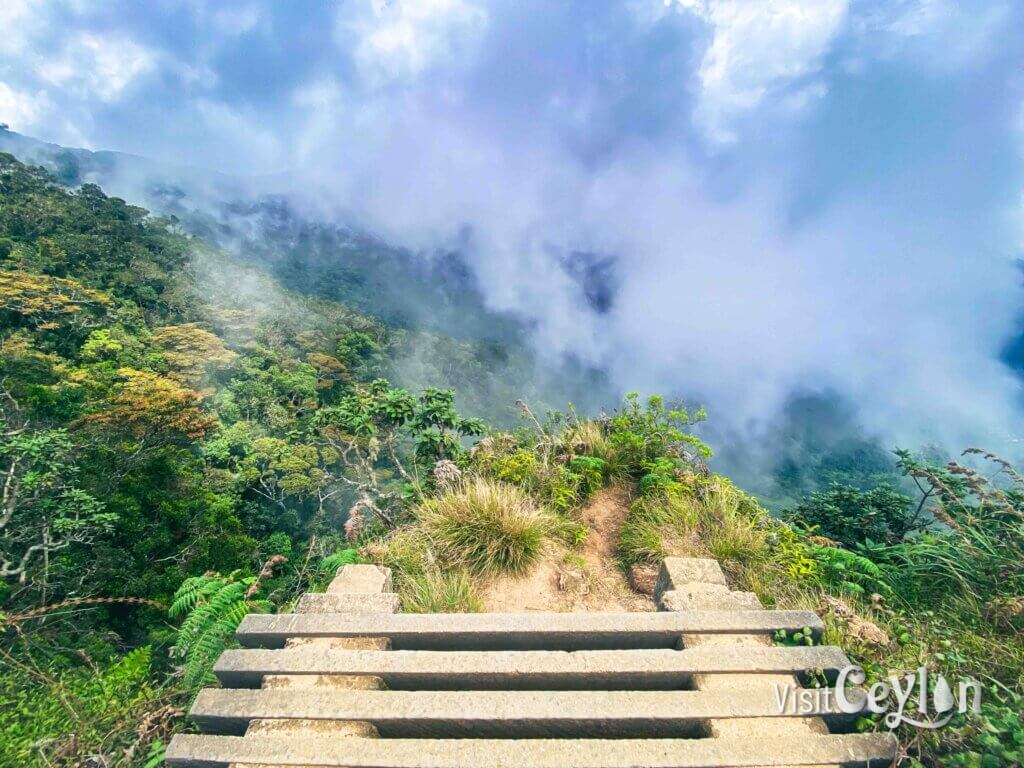
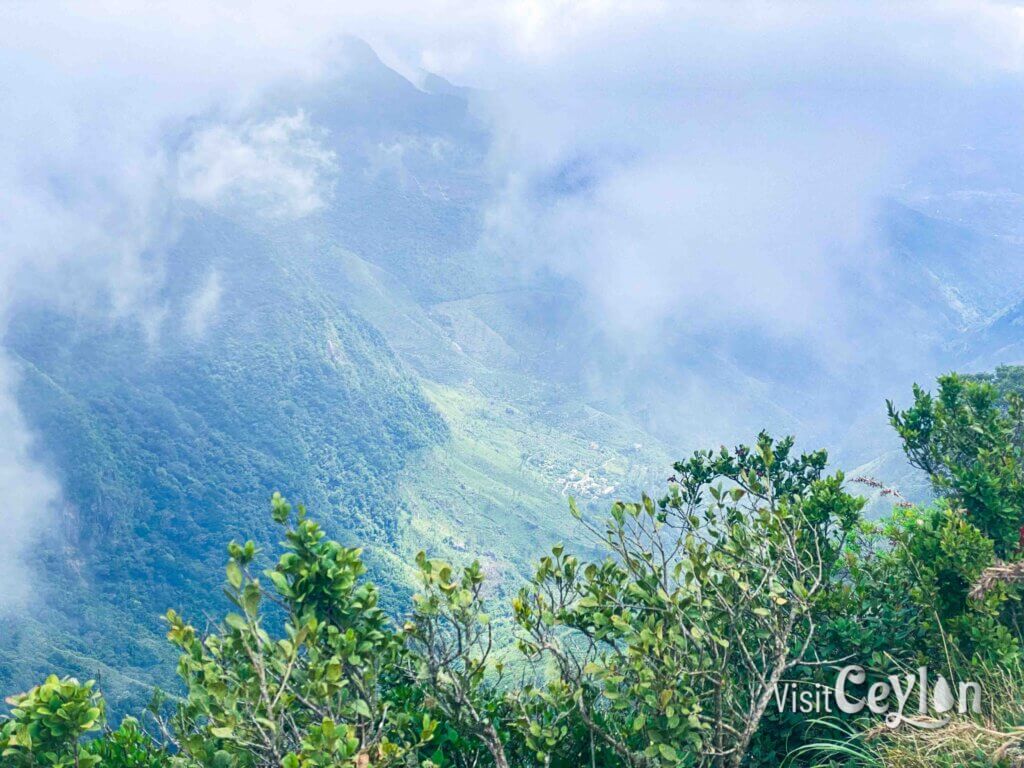
Why is this unique?
Horton Plains National Park stands out for its remarkable features:
Biodiversity Hotspot
Plants: You’ll find a wonderful variety of over 188 plant species flourishing in this lovely area, and among them are 14 unique blooming plants that you can’t find anywhere else, like the stunning Rhododendron arboreum, which is sure to catch your eye
Mammals: The park shelters 24 mammal species, with the majestic sambar deer, which is the largest deer species in Sri Lanka and a prominent sight in Horton Plains.
Birds: A haven for birdwatchers, it is home to 87 bird species, including endemic ones like the yellow-eared bulbul, dull-blue flycatcher, and Sri Lanka white-eye.
Reptiles and Amphibians: Among the 14 species recorded, the endemic Rhinophrynus dorsalis frog adds to the park’s uniqueness.
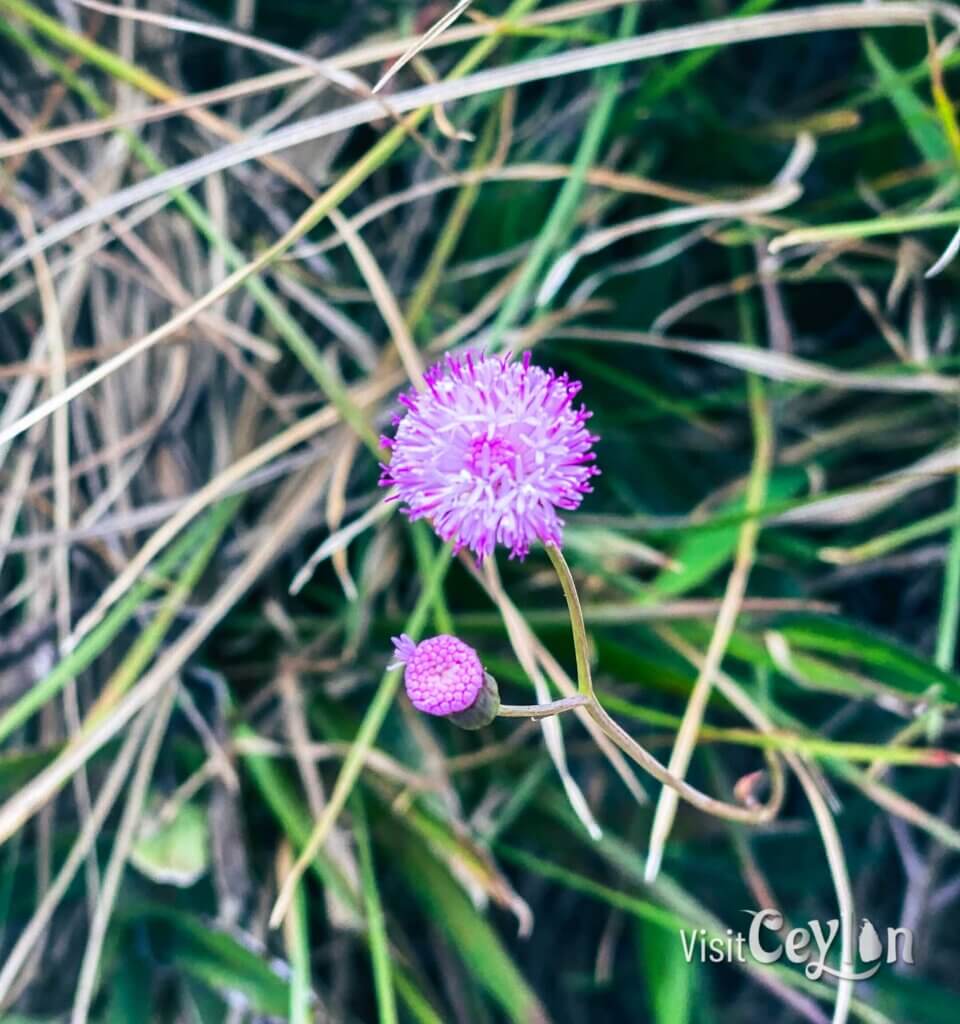
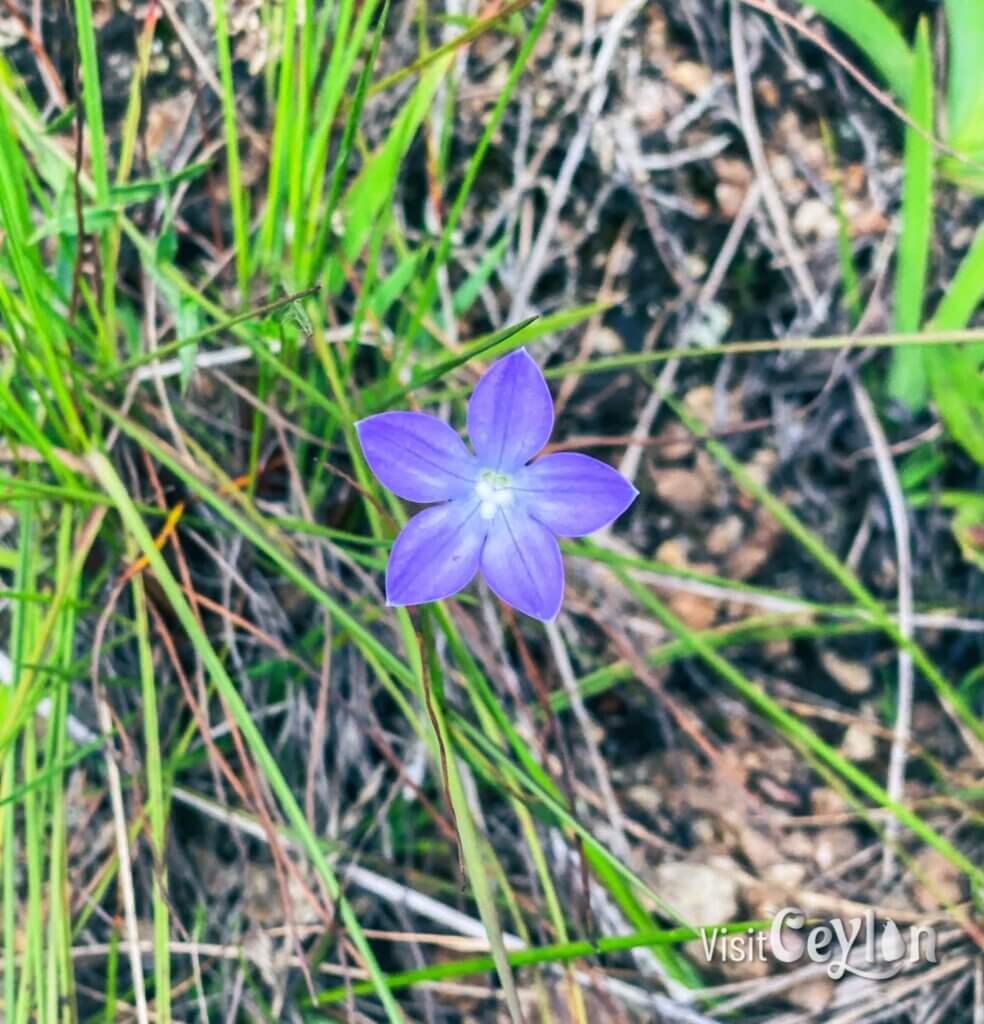
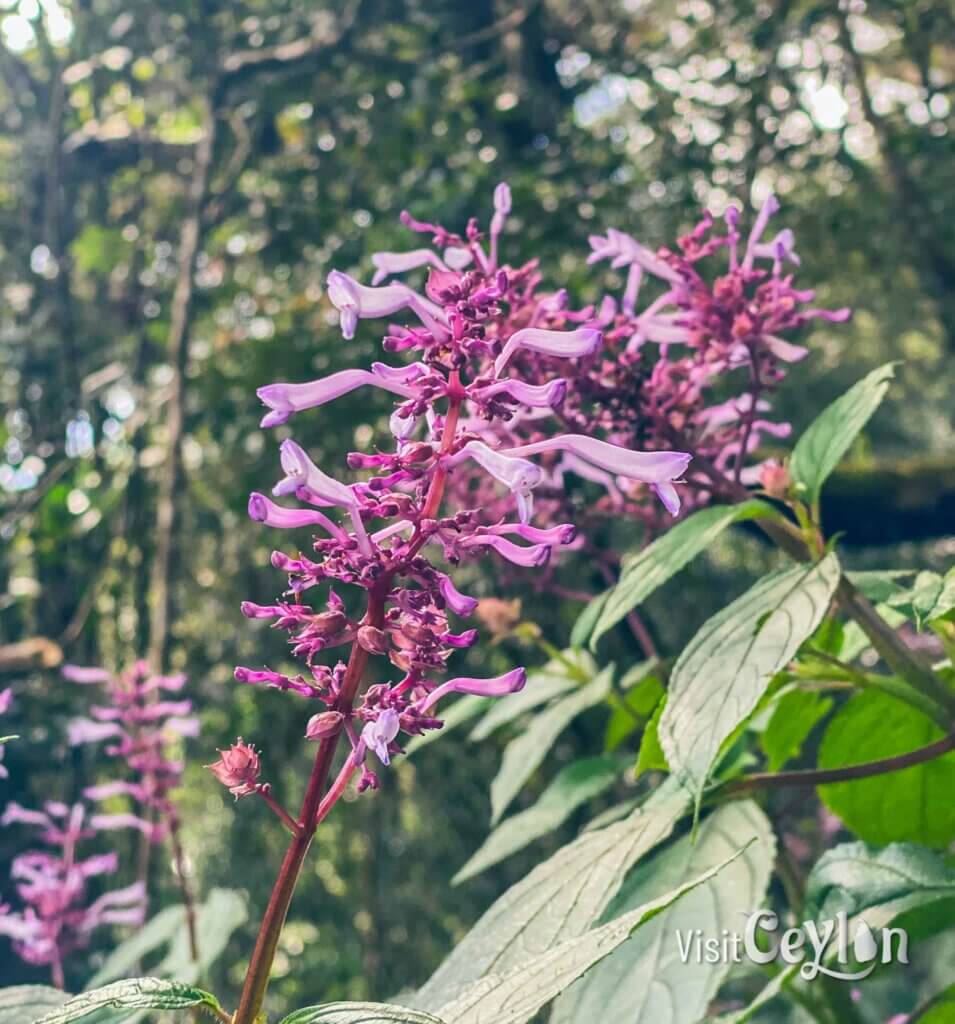
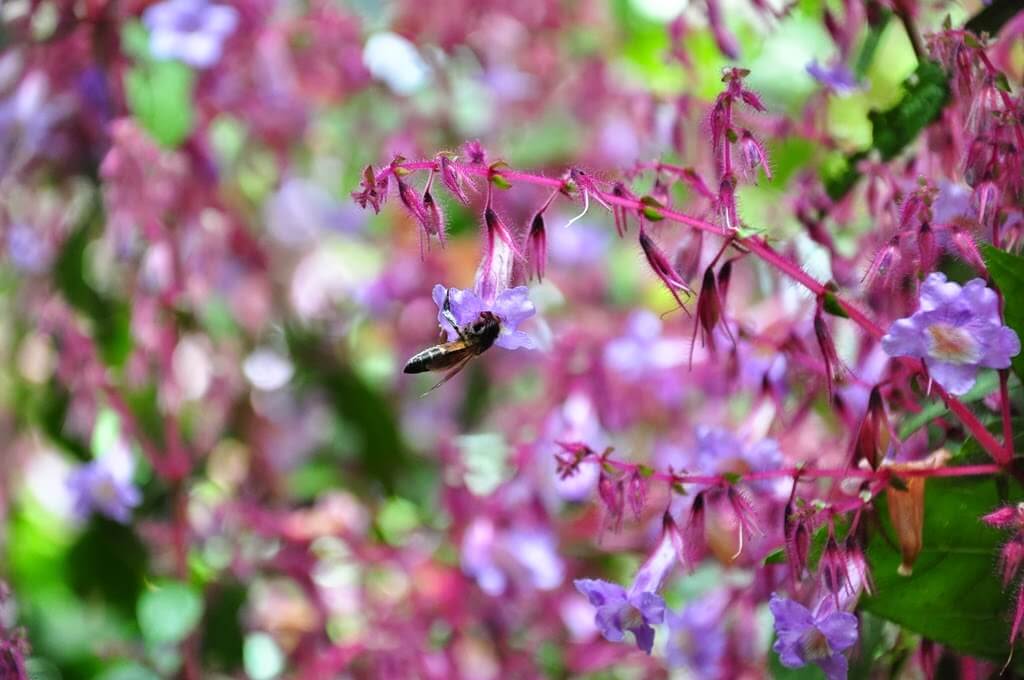
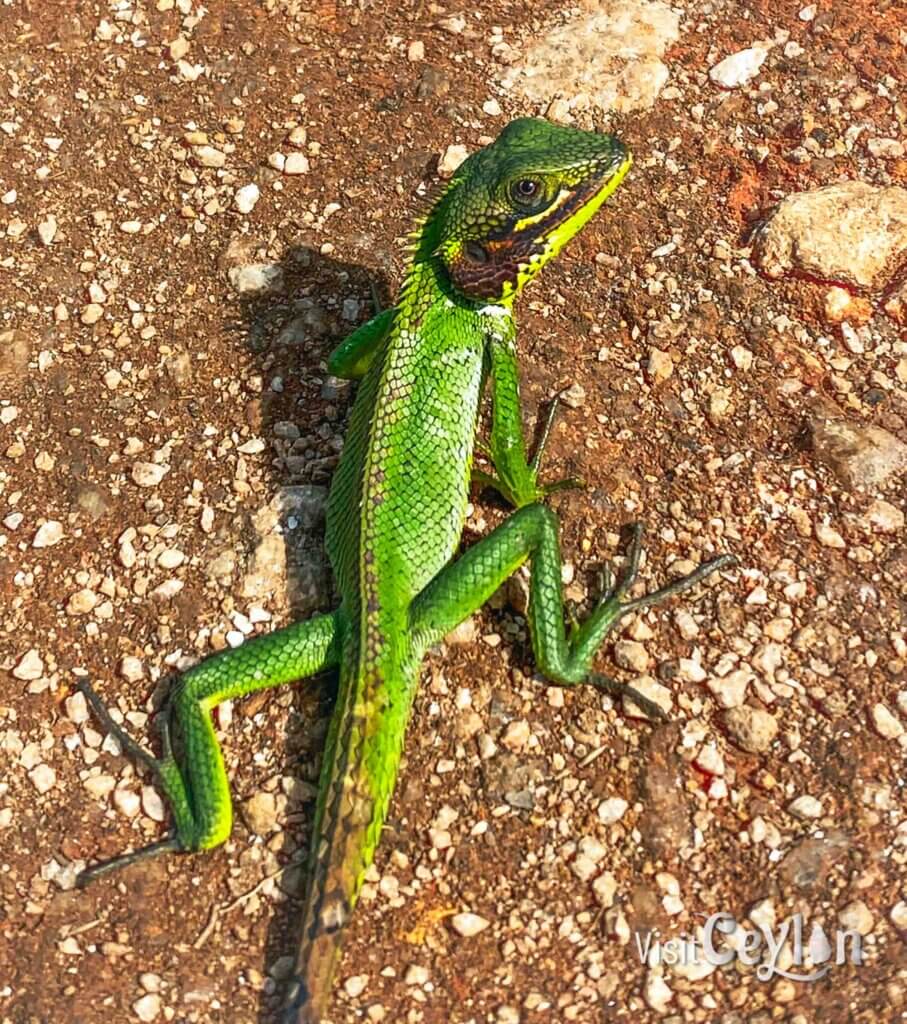
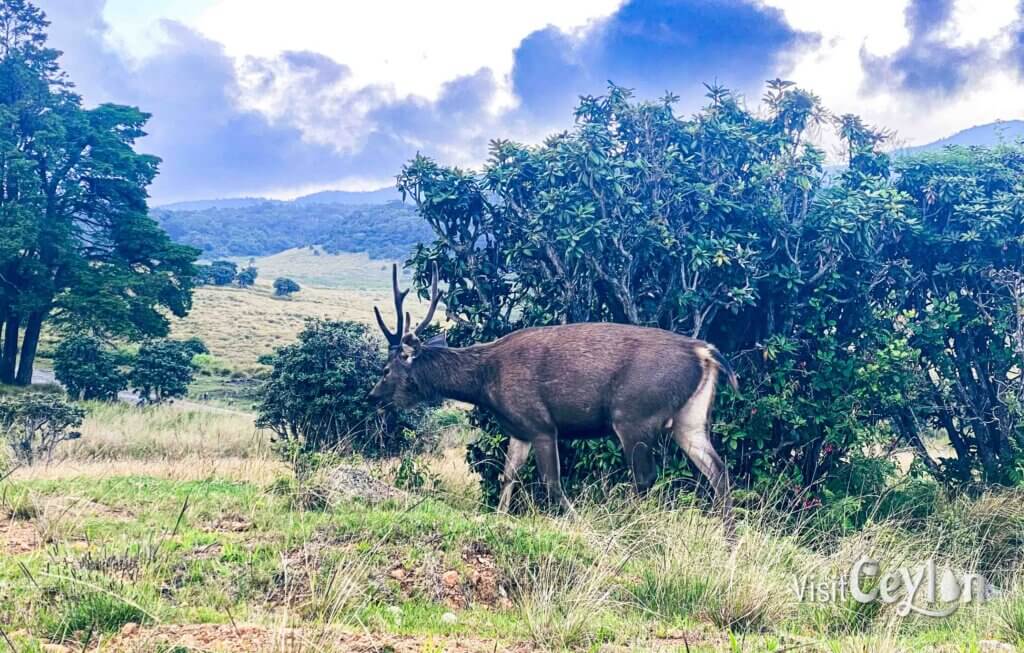
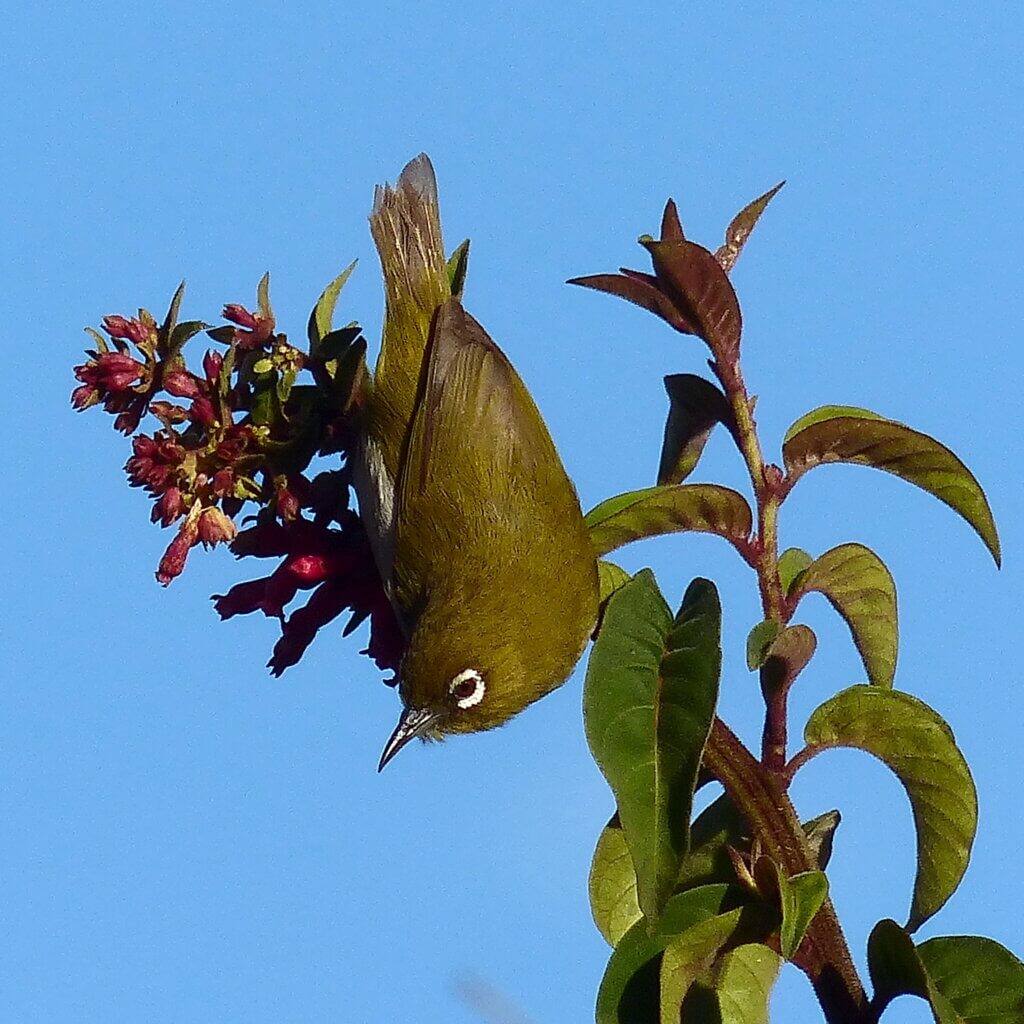
Climate
Known as the coldest and windiest place in Sri Lanka, Horton Plains offers a refreshing contrast to the tropical heat of the island.
At an altitude of 2,100–2,300 meters, Horton Plains enjoys a cool, temperate climate, with daytime temperatures around 13°C (55°F). Its rolling hills, mist-filled valleys, and crystal-clear streams create a serene environment, making it ideal for trekking.
Landscape Diversity
The landscape is a captivating blend of rolling hills, lush montane forests, expansive grasslands, marshy lands, and crystal-clear water ecosystems, forming a beautiful tapestry of habitats that are alive with vibrant wildlife.
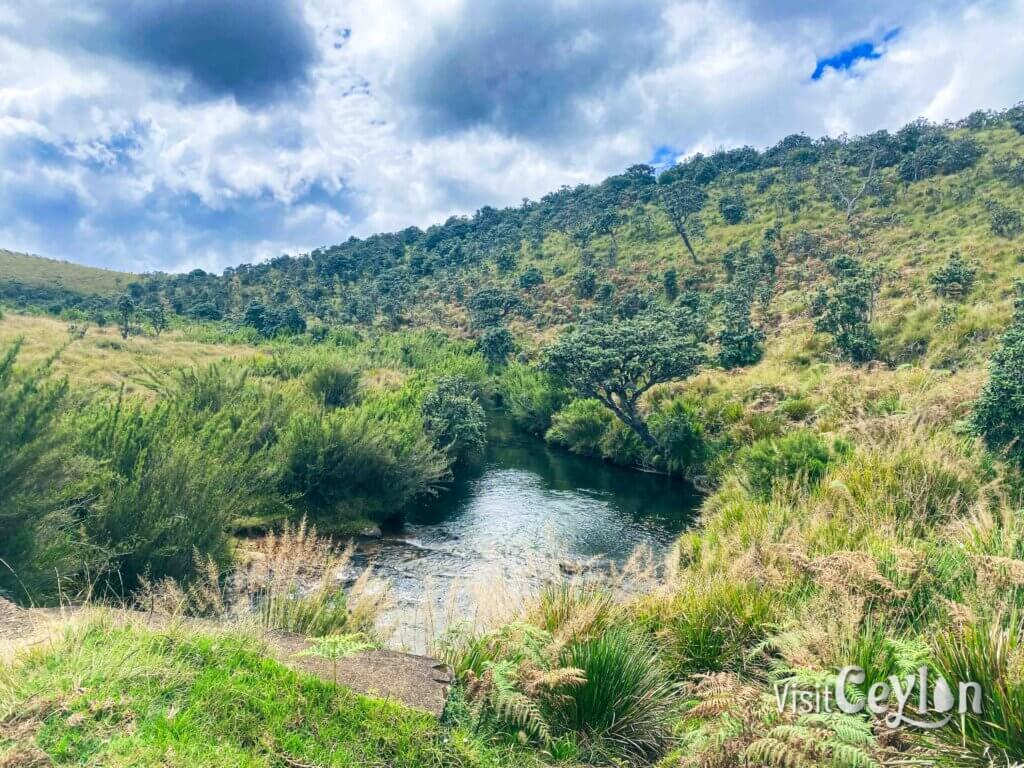
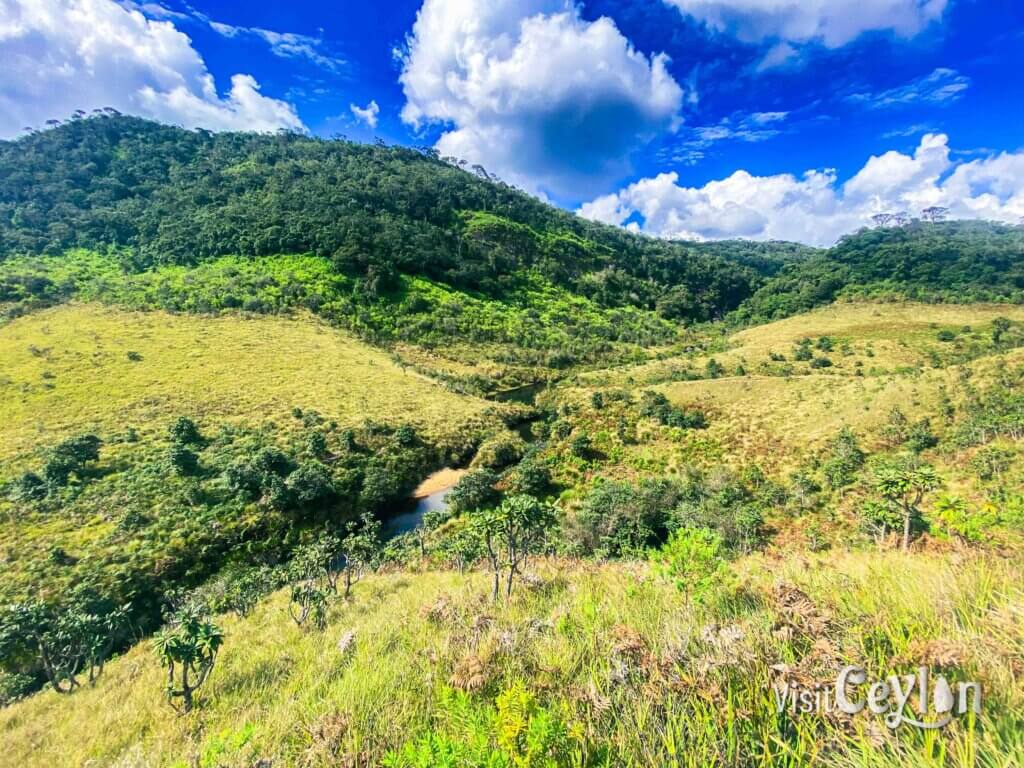
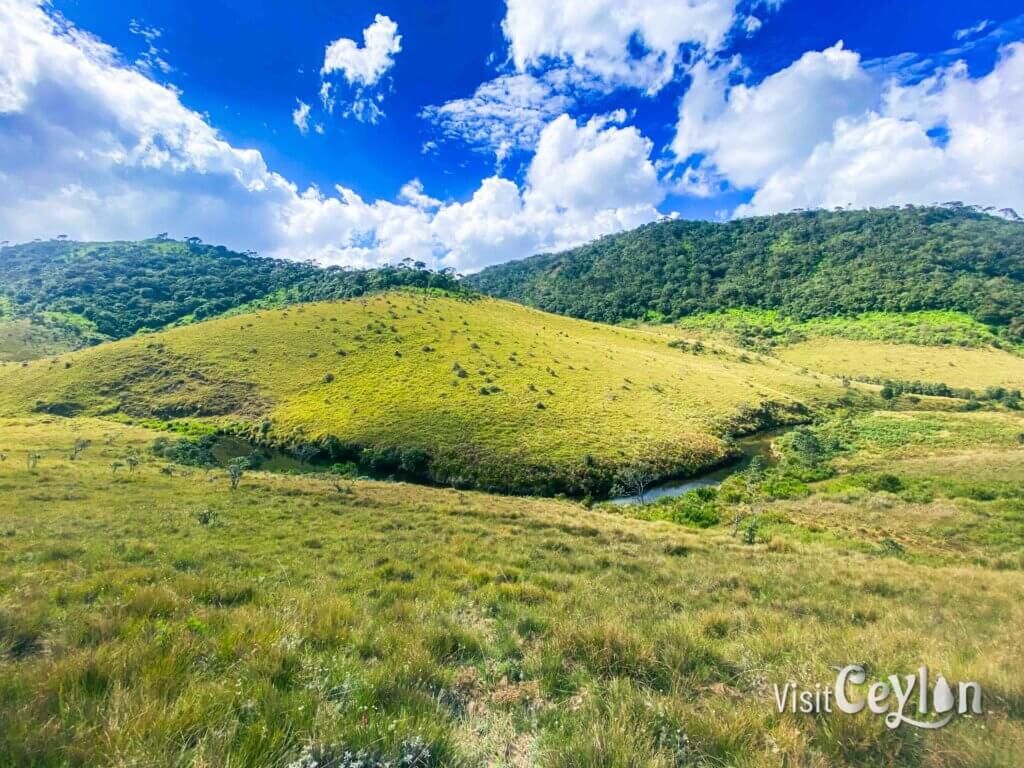
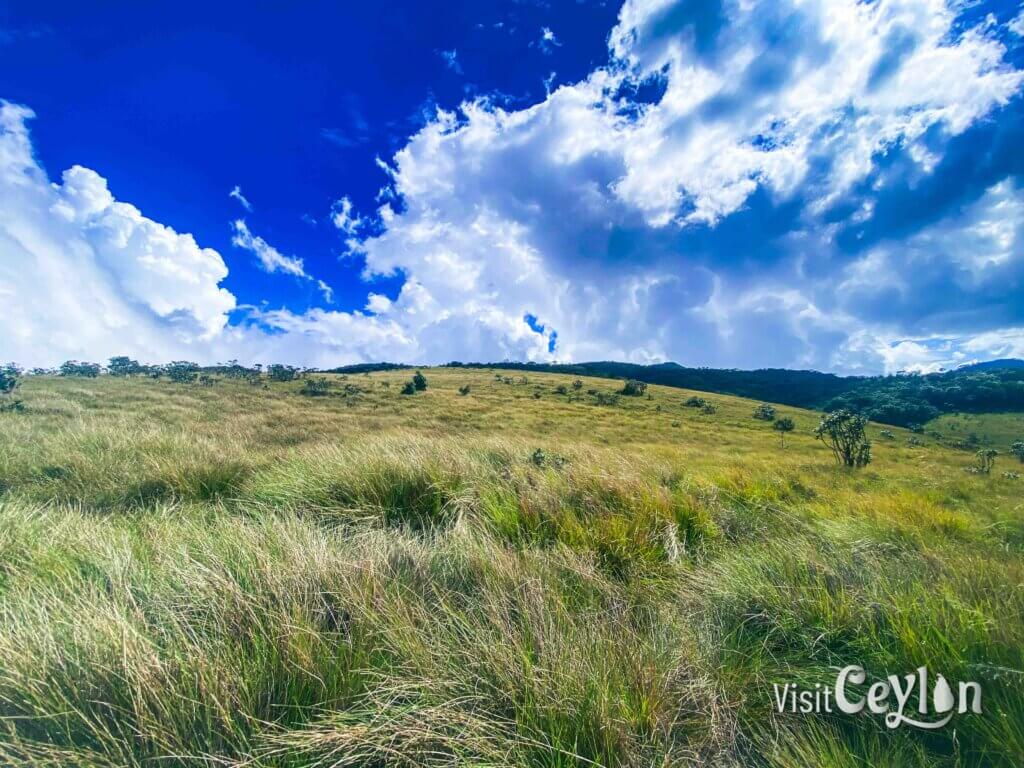
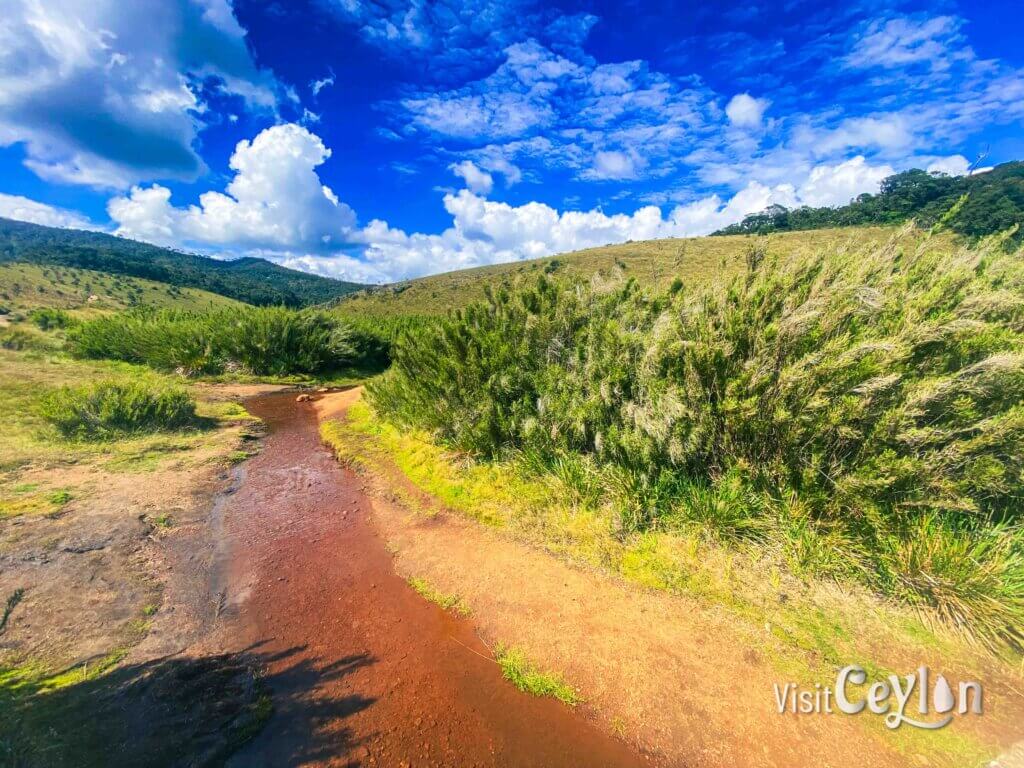
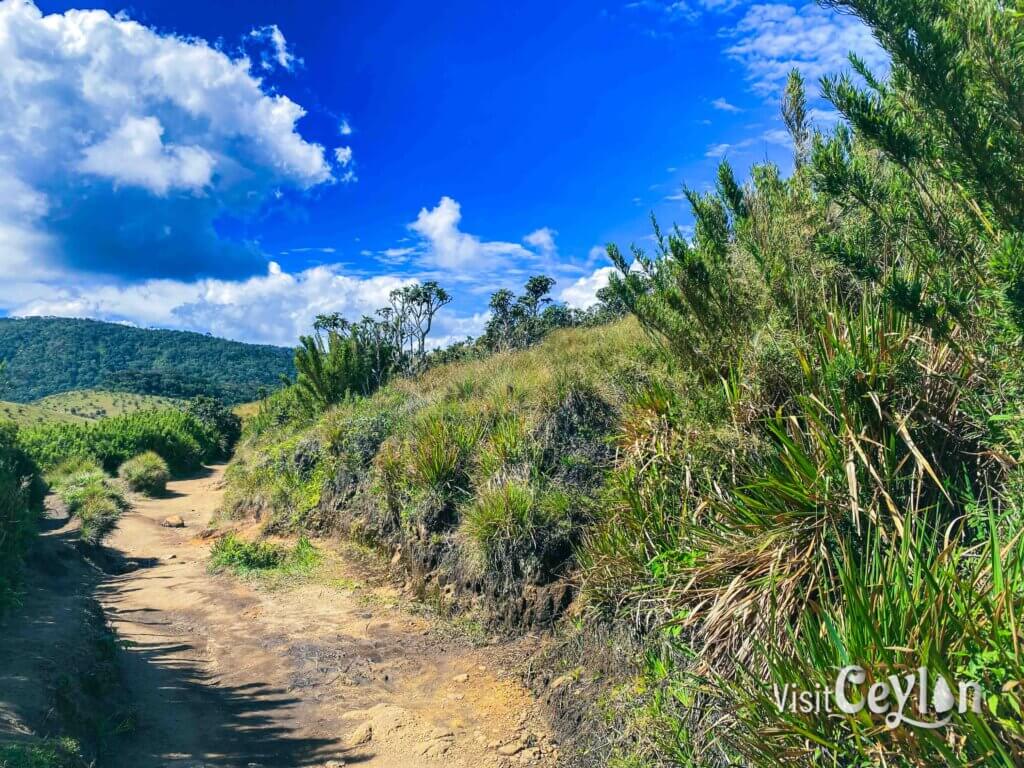
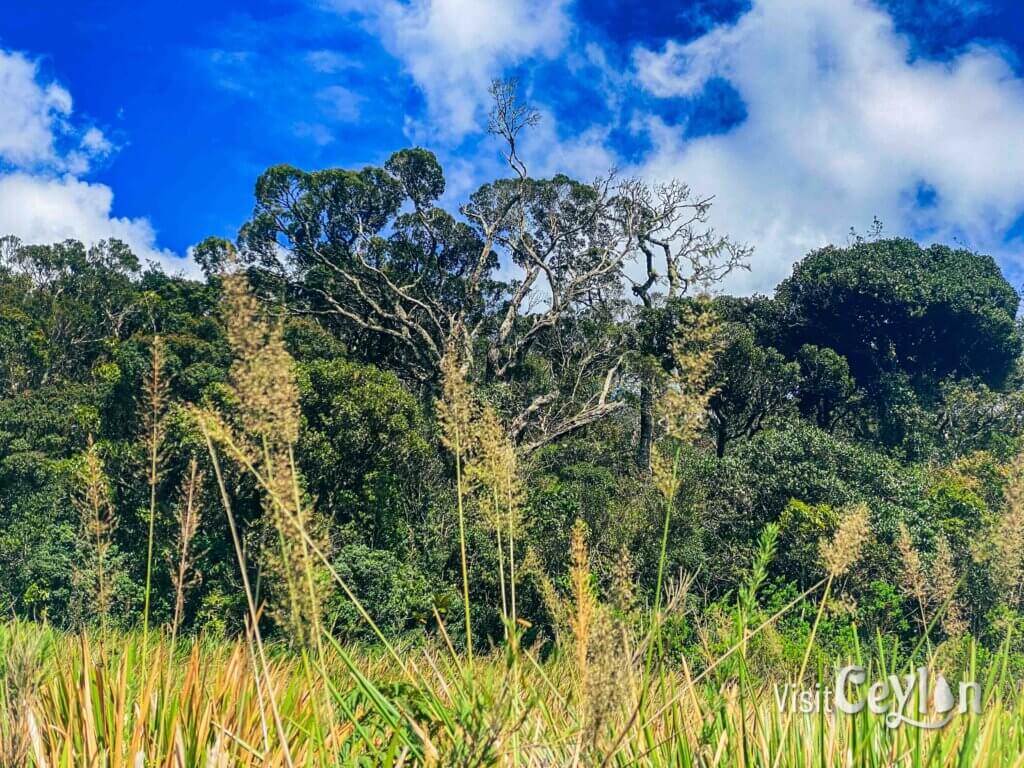
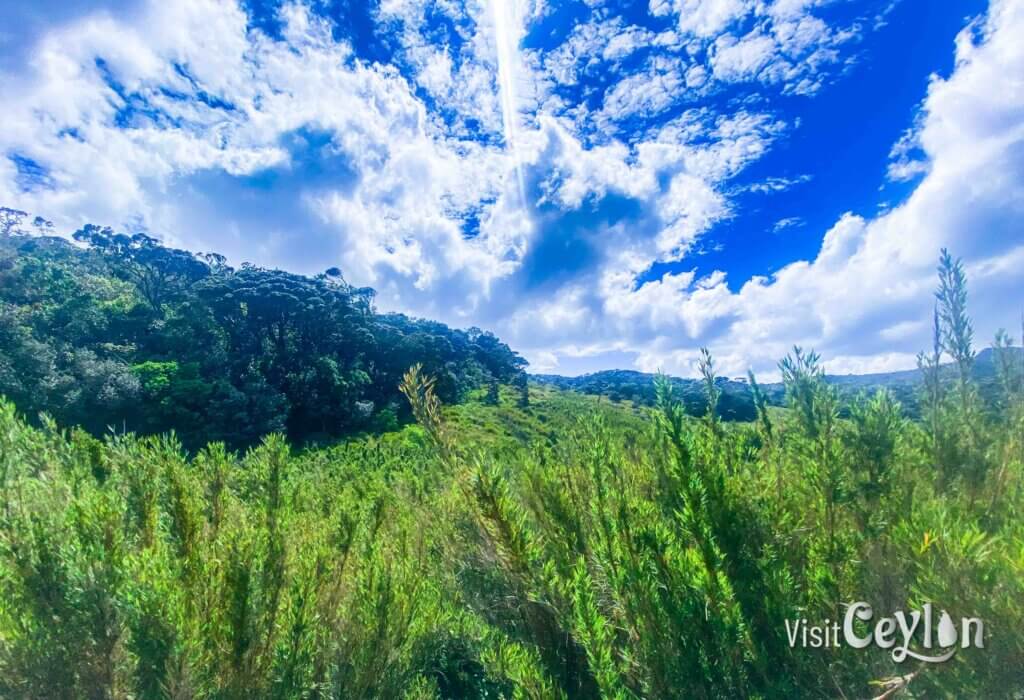
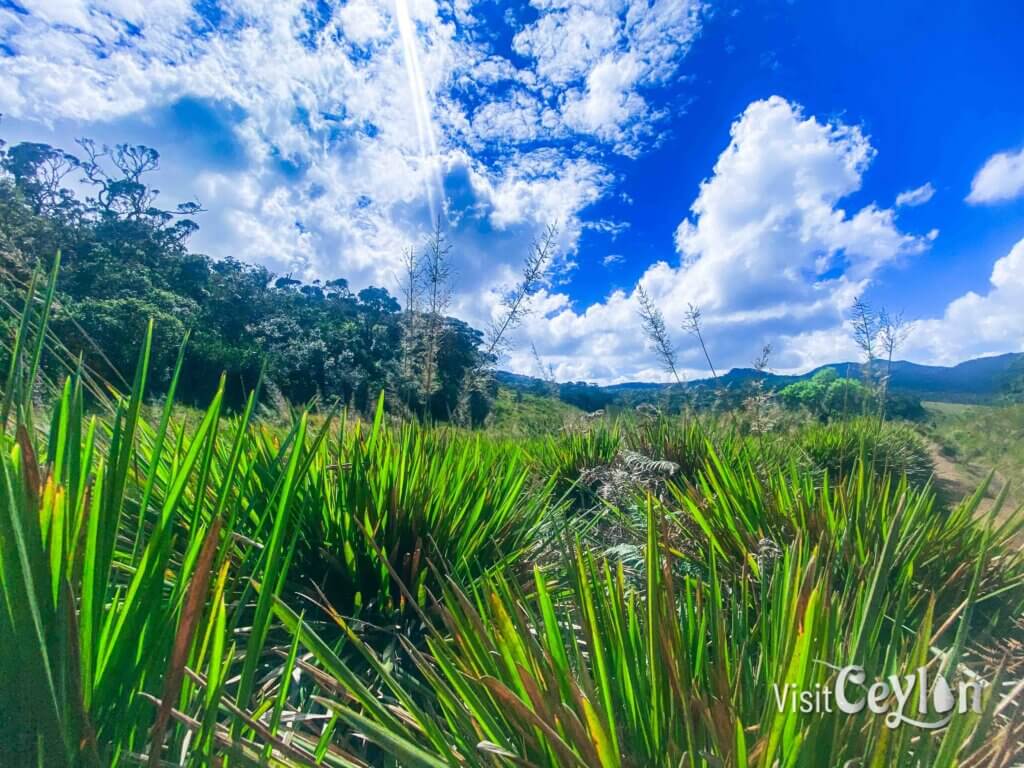
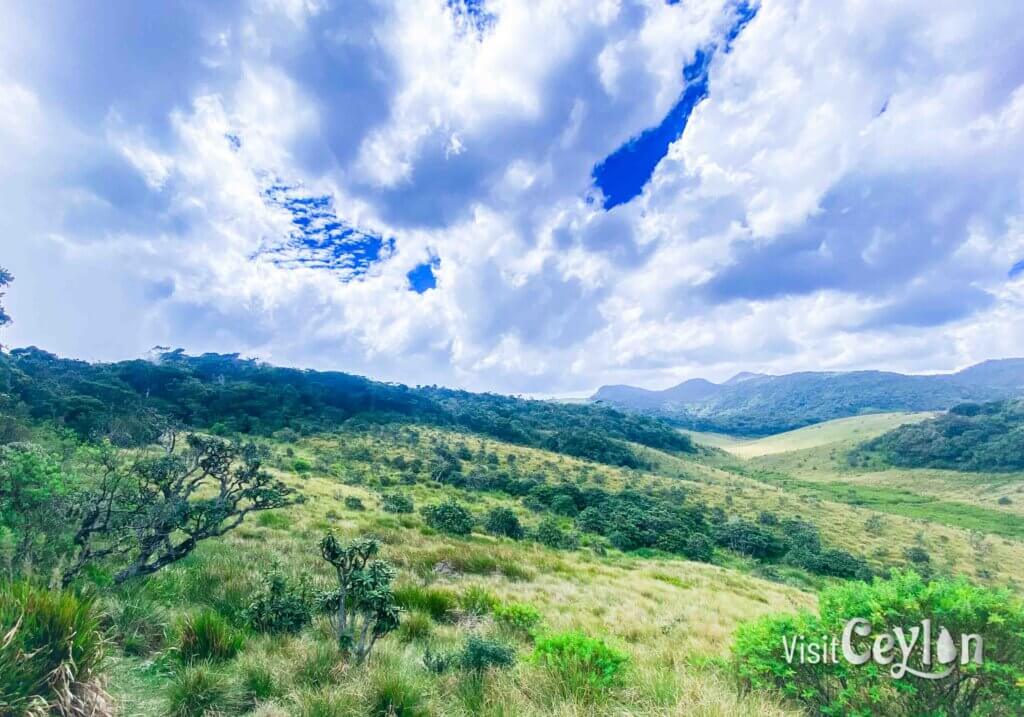
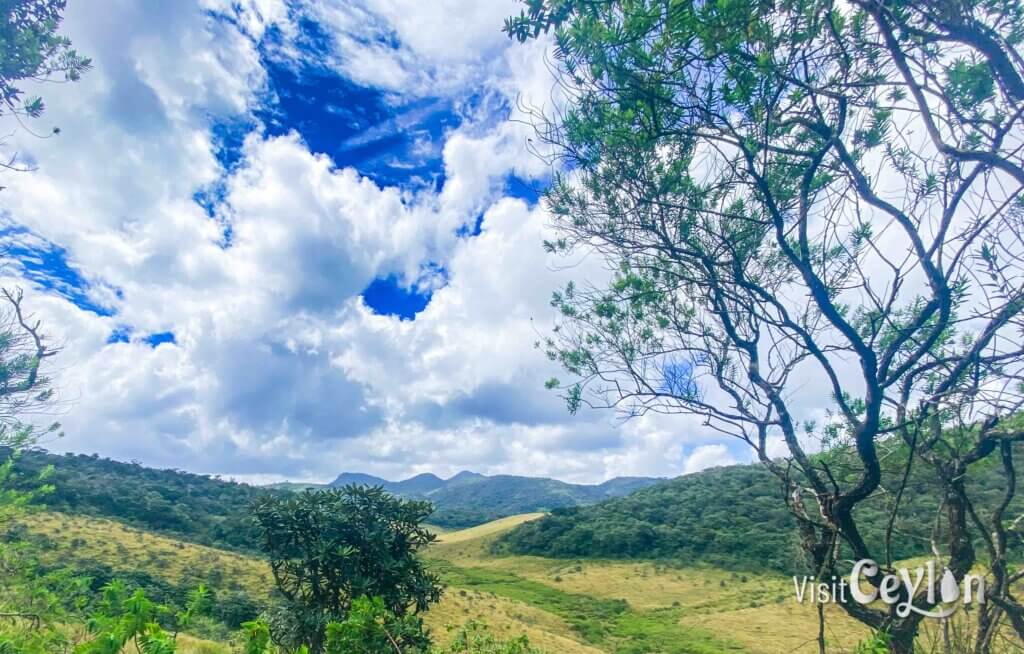
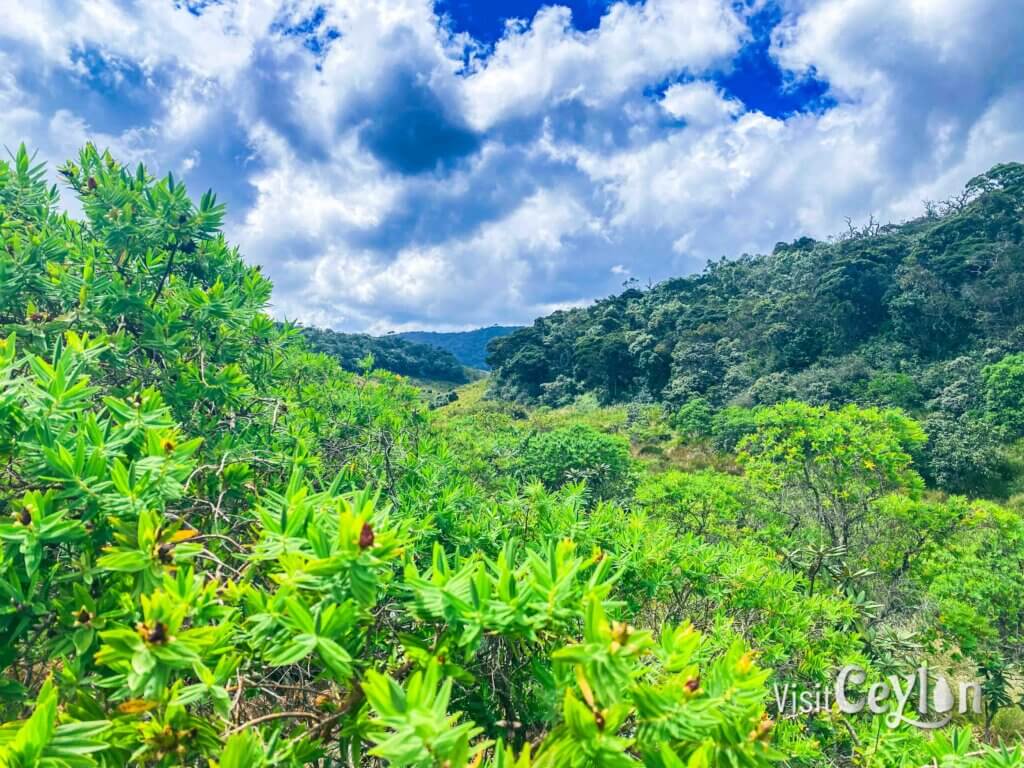
Conservation and Significance
Horton Plains is not just a scenic gem—it’s a critical conservation area.
Protected Status
The park is part of the Central Highlands of Sri Lanka, and it was designated as a UNESCO World Heritage Site in 2010.
Conservation Efforts
To protect its fragile ecosystem, visitors are required to follow strict environmental guidelines. Let’s work together to keep our environment clean by avoiding littering and reducing the use of polythene. Your efforts to minimize our impact on nature are greatly appreciated!
Important Rules and Conditions for Permit Holders
Visitors to Horton Plains National Park must follow the Department of Wildlife Conservation’s guidelines to ensure a safe and eco-friendly experience. Below is a summary of the key conditions for permit holders:
- Responsible Conduct:
- Permit holders are responsible for complying with Flora and Fauna Protection Ordinances and regulations.
- Each permit holder is jointly responsible for ensuring these rules are followed.
- Permit Details:
- Permit holders must list all accompanying individuals (e.g., guides, chauffeurs, labourers) before entering the park.
- Individuals not listed will be asked to leave the park.
- Entry and Exit Times:
- Visitors can only enter between 5:00 AM and 6:00 PM and must exit by 6:30 PM on the same day unless staying overnight with approval.
- Prohibited Items:
- Firearms, automatic or military weapons, and shotguns below 16 bore are not allowed.
- Restricted Hours:
- Movement in the park is prohibited between 6:30 PM and 5:00 AM.
- Noise Disturbance:
- Activities like playing musical instruments, shouting, or other noise disturbances are not permitted as they can disrupt wildlife.
- Closed Areas:
- Visitors must avoid entering areas closed by the park warden.
- Removal of Items:
- Removing parts of animals, plants, or objects of historical or scientific interest is forbidden without prior approval.
- Camping Restrictions:
- Camping is only allowed with written approval from the park warden or at designated accommodations.
- Use of Artificial Light:
- Artificial light can only be used to navigate roads or paths and is restricted to certain hours.
- Following Instructions:
- Visitors must follow directions from park officials for safety and wildlife protection.
- Permit Presentation:
- Visitors must present their permits when requested by park officials.
- Permit Revocation:
- If a permit is revoked, visitors must leave the park promptly after being informed.
These rules aim to protect the park’s fragile ecosystem while ensuring visitors have a safe and enjoyable experience.
Tips for Visitors: Plan Your Adventure
Understanding the costs and logistics will help you make the most of your visit to Horton Plains National Park.
Entry Fees
For foreign visitors
The entry fees for foreign visitors can seem high. As of 16th January 2024, the total cost for two adults was LKR 16,300, approximately GBP £39.12, Euros €45.64, or US $50.53 (currency conversion as of 21st December 2023). Here’s the detailed breakdown:
- LKR 16,300 – Entry fee for two foreign adults
- LKR 150 – JOCOV (the purpose of this charge is unclear)
- LKR 3,260 – Service charge
- LKR 3,547.80 – Value Added Tax (VAT)
For local visitors
For local visitors, the entry fee for two adults is significantly lower:
- LKR 300 – Entry fee for two local adults
- LKR 400 – Service charge
- LKR 126 – Value Added Tax (VAT)
- Total: LKR 826 (as of 19 October 2024).
Hiking Trail
The circular 9-kilometer route takes around 3–4 hours to complete. It includes must-see stops like World’s End, Baker’s Falls, Mini World’s End and several panoramic viewpoints.
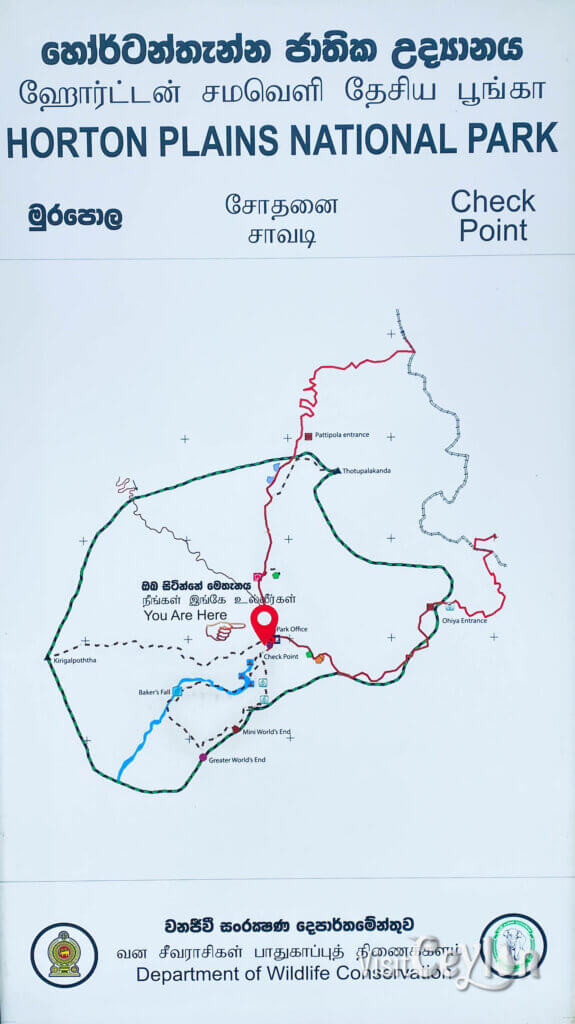
Best Time to Visit
The period from January to March offers the clearest skies and the best hiking conditions, enhancing your chances of fully appreciating the park’s beauty. For an optimal experience, plan your visit early in the morning to witness the breathtaking views at World’s End. As the day goes on, a gentle mist often wraps around the landscape, softly blurring those beautiful views we cherish
What to Carry
Pack the essentials:
- Comfortable shoes and weather-appropriate clothing
- Water and light snacks
- Eco-friendly gear (polythene is prohibited to protect the environment)
By preparing well, you can ensure a smooth and enjoyable visit to this remarkable destination.
Accommodations
The Department of Wildlife Conservation offers circuit bungalows inside Horton Plains National Park. These bungalows are perfect for those who want to extend their stay and immerse themselves in the park’s serene environment.
- Bungalows Available:
- Ginihiriya Bungalow
- Mahaeliya Circuit Bungalow
- Occupancy: Each bungalow can accommodate up to 10 people.
- Reservation: Visitors can apply online for these accommodations through the DWC official website.
How to Get to Horton Plains National Park
Horton Plains National Park is located in Sri Lanka’s central highlands and can be accessed from two main routes: the Ambewela side and the Ohiya side. Both roads offer unique scenic beauty, making the journey to the park as memorable as the destination itself.
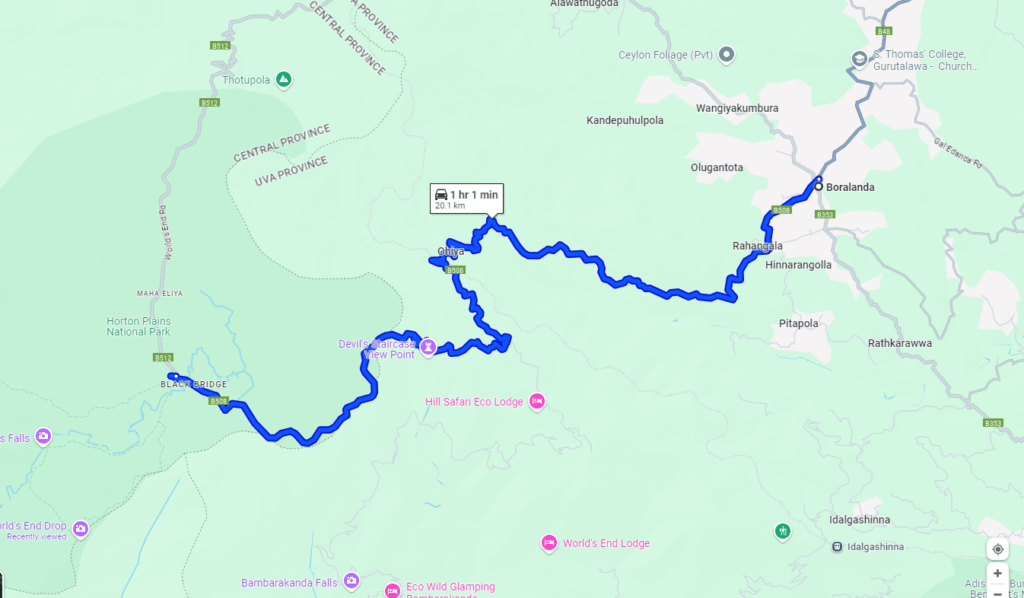
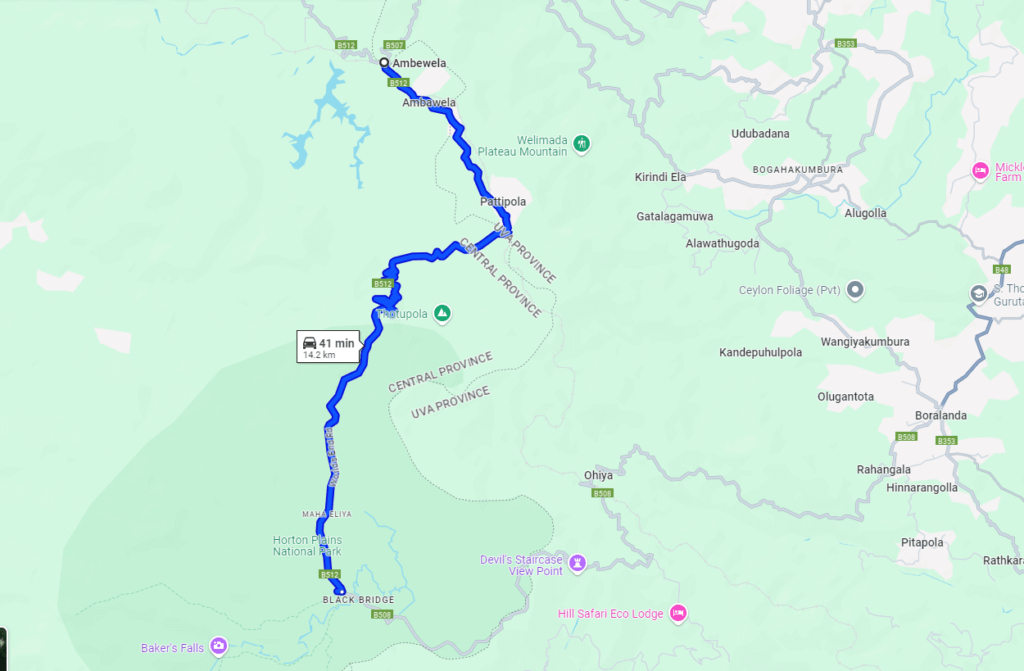
Best Tip
To fully appreciate the stunning landscapes, enter from one side and exit from the other. This way, you can experience the true diversity and beauty of the roads leading to the park.
Transportation Options
Private Vehicles: A private vehicle is essential, as no public transportation is available on these routes.
Bike Rides: Exploring by motorbike is a fantastic way to connect with nature. However, avoid frequent stops, as wild animals in the area may pose a danger.
By Train: You can take the scenic train ride to Ohiya Railway Station, one of the closest stations to Horton Plains. From Ohiya, the park is about 10 km away and can be reached by tuk-tuk or private vehicle.
By Bus: Public buses operate to nearby towns such as Pattipola or Ohiya. However, they do not go directly to the park. You will need to arrange transport from these towns to Horton Plains.
Warm Historical Moments & Whispers from History
Horton Plains, originally known as Maha Eliya Thenna (“Great Open Plain”), was renamed during British rule after Sir Robert Wilmot-Horton. Local folklore links the plains to tales from the Ramayana epic, and archaeological finds suggest ancient human habitation by the Balangoda culture.
Is Horton Plains Worth Visiting?
Horton Plains National Park offers a captivating mix of natural beauty, biodiversity, and cultural heritage. While its unique landscapes and wildlife make it a must-visit destination, potential visitors should plan ahead to navigate challenges such as pricing and management.
Ready to explore Horton Plains or discover more of Sri Lanka’s hidden gems? Let Visit Ceylon Blog be your guide to this magical island! 😊
Plan Your Adventure: Explore Our Interactive Map!
To make your journey even easier, check out our interactive map, where we’ve marked all these amazing destinations. Use it to plan your trip and discover more hidden gems in Sri Lanka!
To plan your trip with public transportation in Sri Lanka, visit Sri Lanka Railways for train schedules.
For your reference, I will put the Horton Plains Main Trail route GPS coordinates in GPX format. This GPX file can be used in your mobile or watch GPS navigation software
